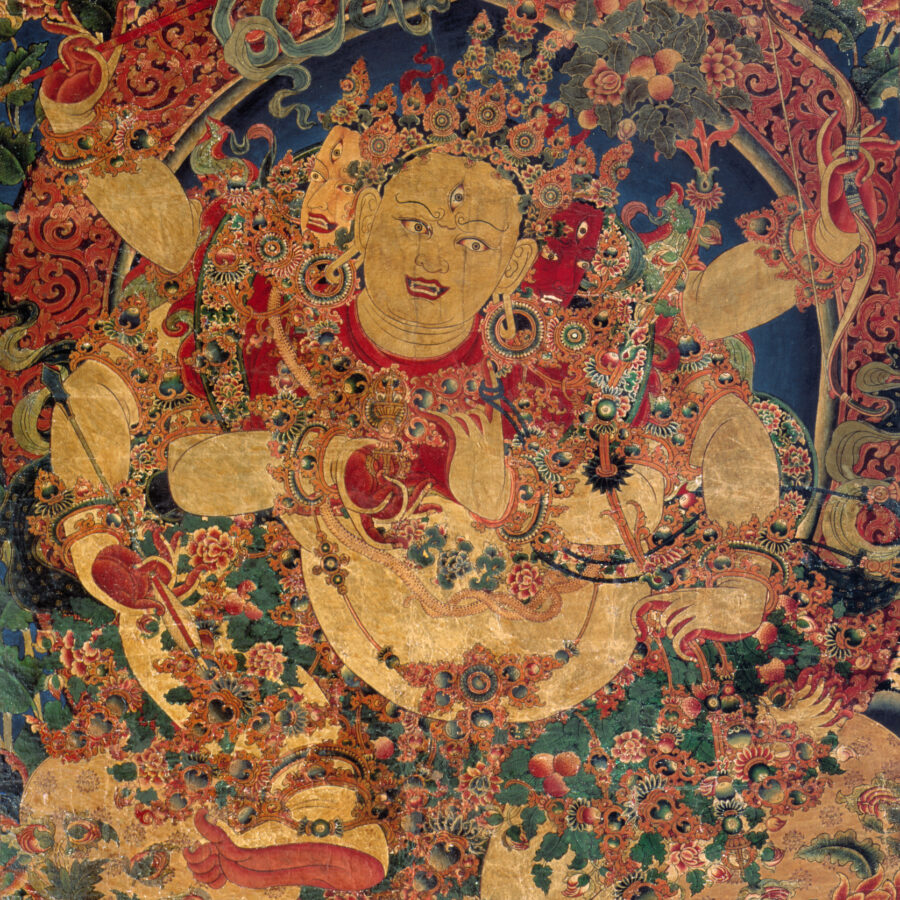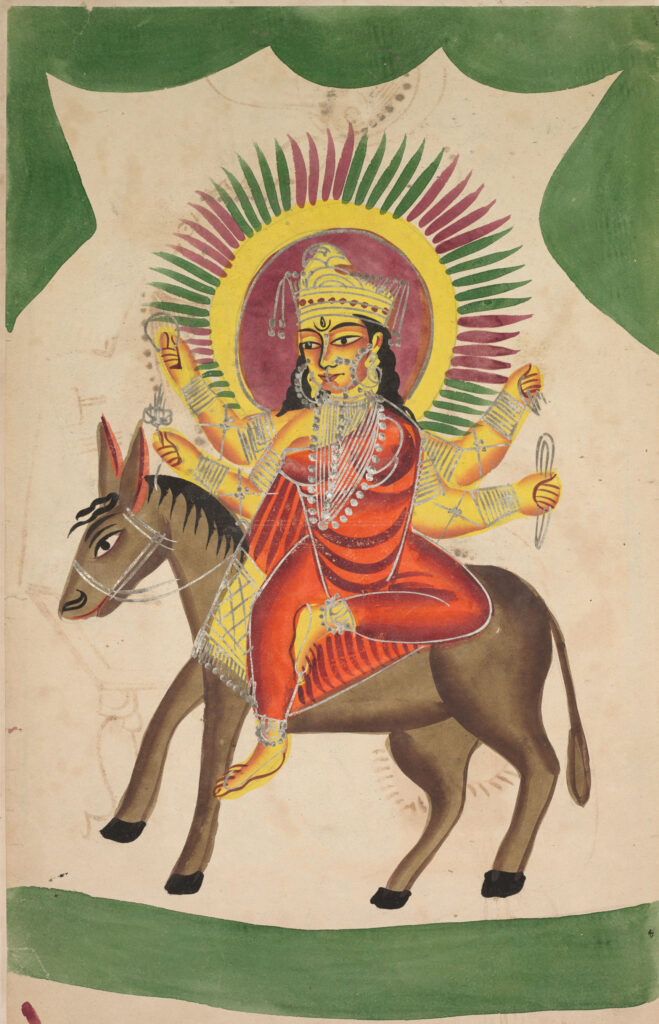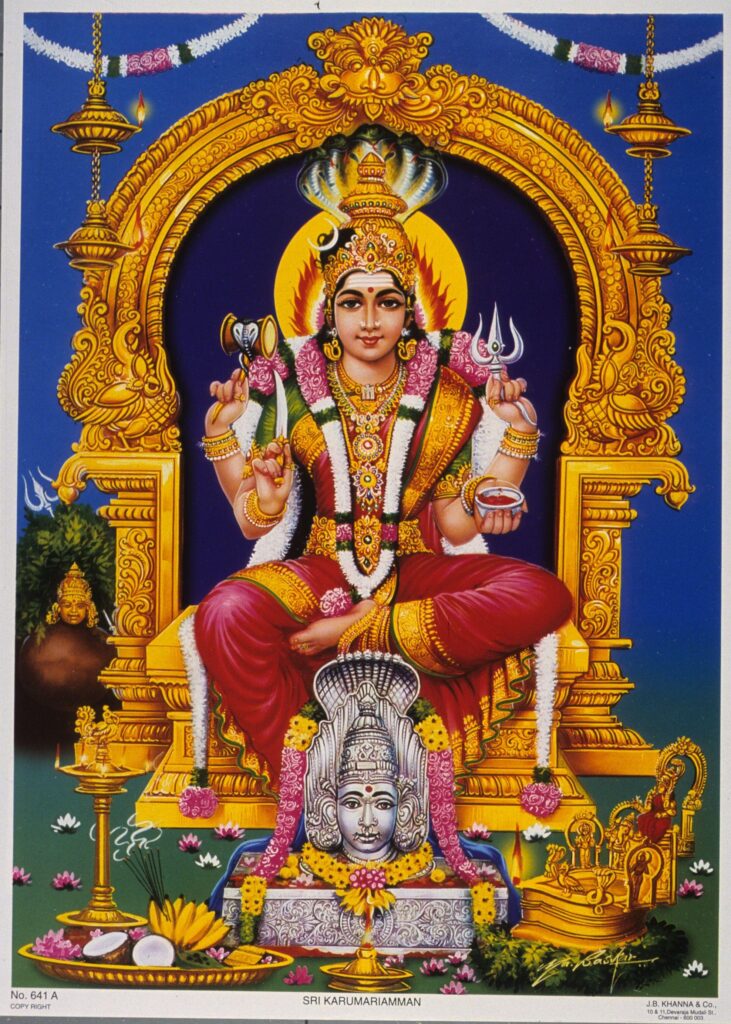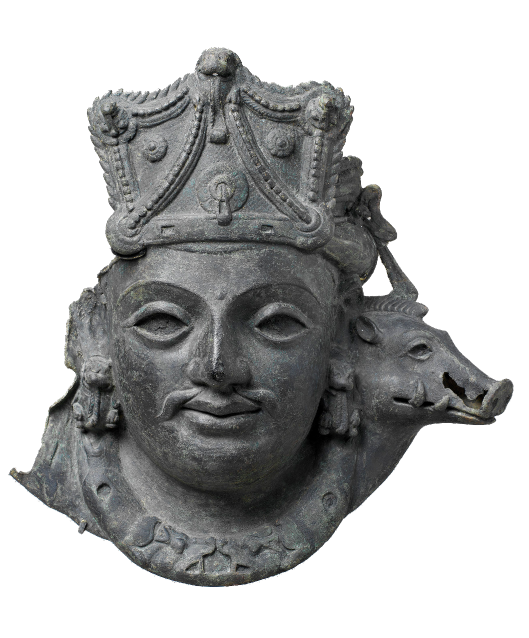PERSPECTIVES
The Deities of Maladies: Goddess Cults Around Pandemics
A stone stele from Pala-period eastern India (c. 10-11th century) depicts a goddess clad in a skirt of leaves, her feet trampling two prostrate figures. She is Parnashavari, the Buddhist deity of healing. The figures below her feet are interpreted as anthropomorphic representations of diseases like smallpox. Parnashavari is one of South Asia’s many “epidemic goddesses,” historically associated with allaying disease and pestilence, along with Hariti, Mariamman, Sitala, Manasa, Ola, and Hadkaimata. Seen together, they provide fascinating insights into traditional perceptions around healing. The origin stories of these community-based deities invoked against contagious diseases and toxins often also tell us about the feared ailments that once plagued the subcontinent.
The scholar Miranda Shaw, in her book Buddhist Goddesses of India (2006), links Parnashavari (also known as Parnashabari) to the Shavari or Sabara community that resides in eastern India. Her name, which means “Sabara woman dressed in leaves,” is derived from the Sanskrit parna, meaning “leaf”, and sabari, which refers to a Sabara woman. As a forest goddess, Parnashavari’s girdle of leaves symbolises the power “to cut off disease from its root, and the power of medicinal herbs.”

According to Shaw, deities of healing like Parnashavari, predominantly female, would have originated as folk or village deities, charged with protecting the community from virulent diseases, before the advent of modern medicine. Although her cult appears to have died out in India, Parnashavari remains an important deity in Tibetan Buddhism.
Another Buddhist deity associated with epidemics, and possibly the oldest such deity in South Asia, is Hariti. In Buddhist mythology, Hariti was the mother of five hundred children and a demon who devoured children in the town of Rajgriha. Ultimately, through the efforts of Gautama Buddha, she gives up cannibalism and starts following Buddhist precepts, becoming a guardian goddess. Revered in Buddhism as a protector of children and pregnant women and a symbol of fertility and childbirth, she is worshipped in parts of South Asia and East Asia, such as Nepal, China and Japan.
Epidemic Goddess Cults
For some time, in the region of Gandhara during the second century, the cult of Hariti grew in parallel with the looming threat of a virulent epidemic — most likely smallpox — which had already devastated Rome. Several scholars associate the popularity of Hariti in this period with the large number of sculptures found in the region devoted to her, including one which invokes her to take smallpox away to the sky. Her cult gradually spread to Buddhist centres in southern India, with her sculptures being recovered at important Buddhist sites such as Nagarjuna and Sankaram in the fourth century.

Parnashavari also offers us a way to examine another disease goddess in India. In the Pala-period stele, scholars have identified a carved figure in the background as Sitala seated on a donkey — her mount — holding a broom and dustpan. While Sitala was invoked to cure smallpox in Bengal, where her cult continues to thrive, the deity is also said to keep diseases of basant (spring) at bay. Her name, meaning “the cool one,” suggests she has the power to alleviate fevers and has been associated with diseases in general, rather than just smallpox. Scholars have documented the existence of other “disease goddesses” in Bengal as well, such as Olabibi (cholera) and Raktabati (a deity of blood infections).

In southern India, as her name suggests, Mariamman is worshipped for protection against smallpox, and is appeased with sacrificial rituals. According to one mythology associated with the deity, she was a Buddhist nun who, while meditating under a neem tree, began curing people of smallpox through the application of a neem salve. Interestingly, the term ‘Mari’ can mean both “rain” and “pox.” And so, alongside her role in alleviating disease, she is also seen as the harbinger of the rains and fertility. The rituals of Mariamman provide insight into the religious rituals of non-dominant caste groups in India. According to scholars, the priests worshipping Mariamman historically belong to the lower caste Pariah community, and even though she is now a pan-regional Hindu deity, members of the community still play an important role in key festivals.

The cult of Mariamman also became the model for another goddess for a modern disease – AIDSAmma. She was created by a school teacher in Mandya, Karnataka as a means of spreading awareness about prophylactics and HIV, blending aspects of goddess worship with scientific knowledge. AIDSAmma’s “boon” to people who prayed to her was a “clear mind” and information, rather than miraculous cures.
Bargaining with the Divine
In some communities, diseases are perceived as divine punishment, much like how AIDS was perceived at first, in the 1980s, before scientific explanations emerged. Such is the case of the goddess Hadkaimata of the Waghari community of Gujarat. Within the community, a dog bite (and any resultant disease or death) is seen as deserved punishment administered by the goddess for moral violations committed by the individual. While the threat of rabies is recognised among the community, scholars think that their belief in Hadkaimata potentially leads to delayed treatment. Similarly, the cult of the non-Vedic, tribal goddess Manasa, invoked to protect people from snake bites, flourishes in the Gangetic delta where snakes emerge from their burrows during the rains.
In recent times, informal devotional practices, as well as rituals in shrines, were conducted for “Corona Devi” (also called “Corona Mai” and “Corona Mātā”). These practices were first seen in rural communities and then spread to urban areas across India soon after the Covid outbreak. The phenomenon illuminates one of the main reasons why deity cults emerged in South Asia around epidemic outbreaks. They were traditions that provided specific religious solutions that facilitated harmonious communication with supra-natural energies outside human control through propitiatory rituals. Fierce and angry forces present in the human body or its environment were personified as deities that could then be pacified and reasoned with. The collective mythology about the deities of diseases are reminders that humans, when faced with uncertainties, have always found solace and continue to do so, in both prayer and medicine.
Rachna Shetty is interested in folk and performing arts, as well as sports and popular culture. She works with the MAP Academy’s Special Projects, with a focus on research and writing.




